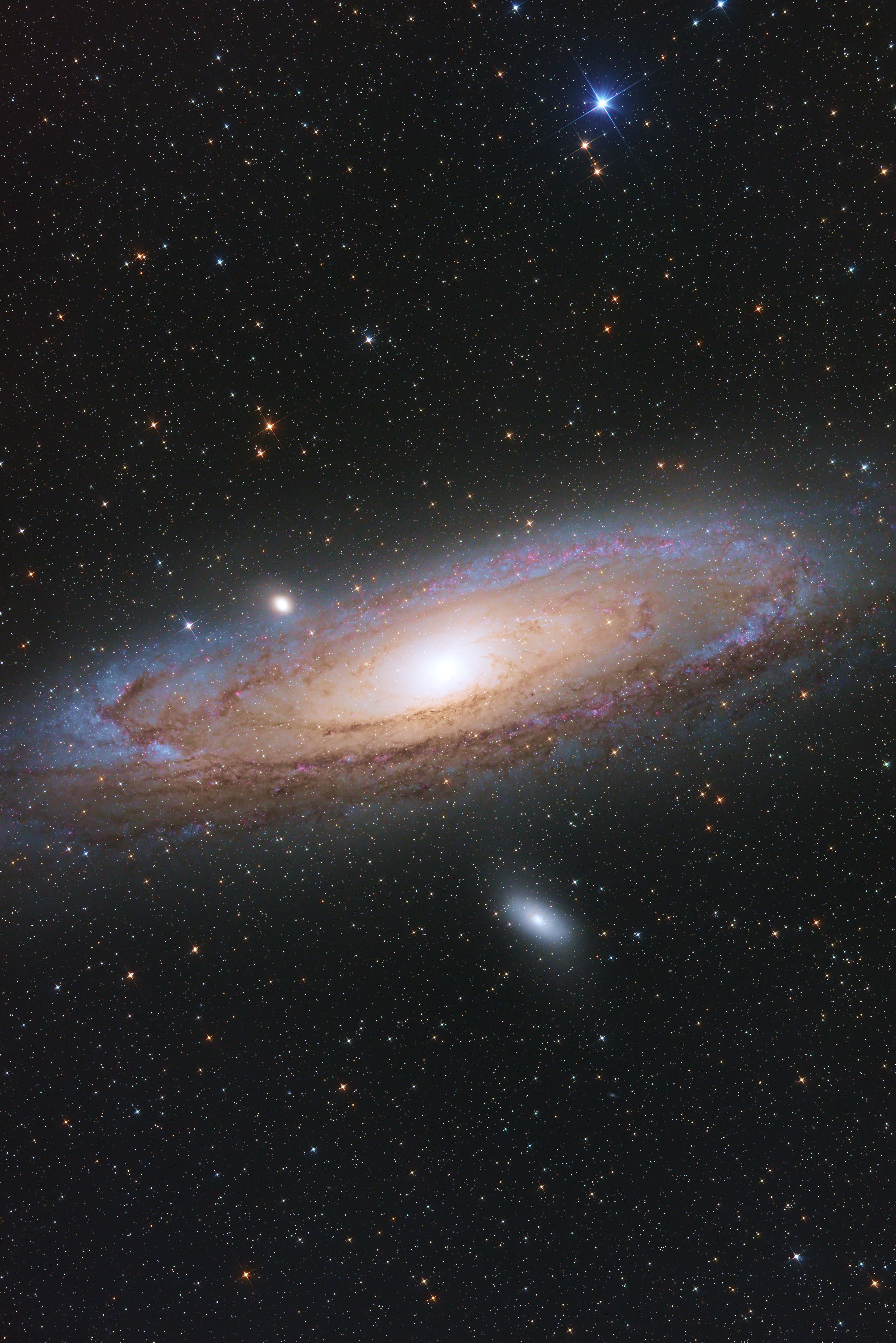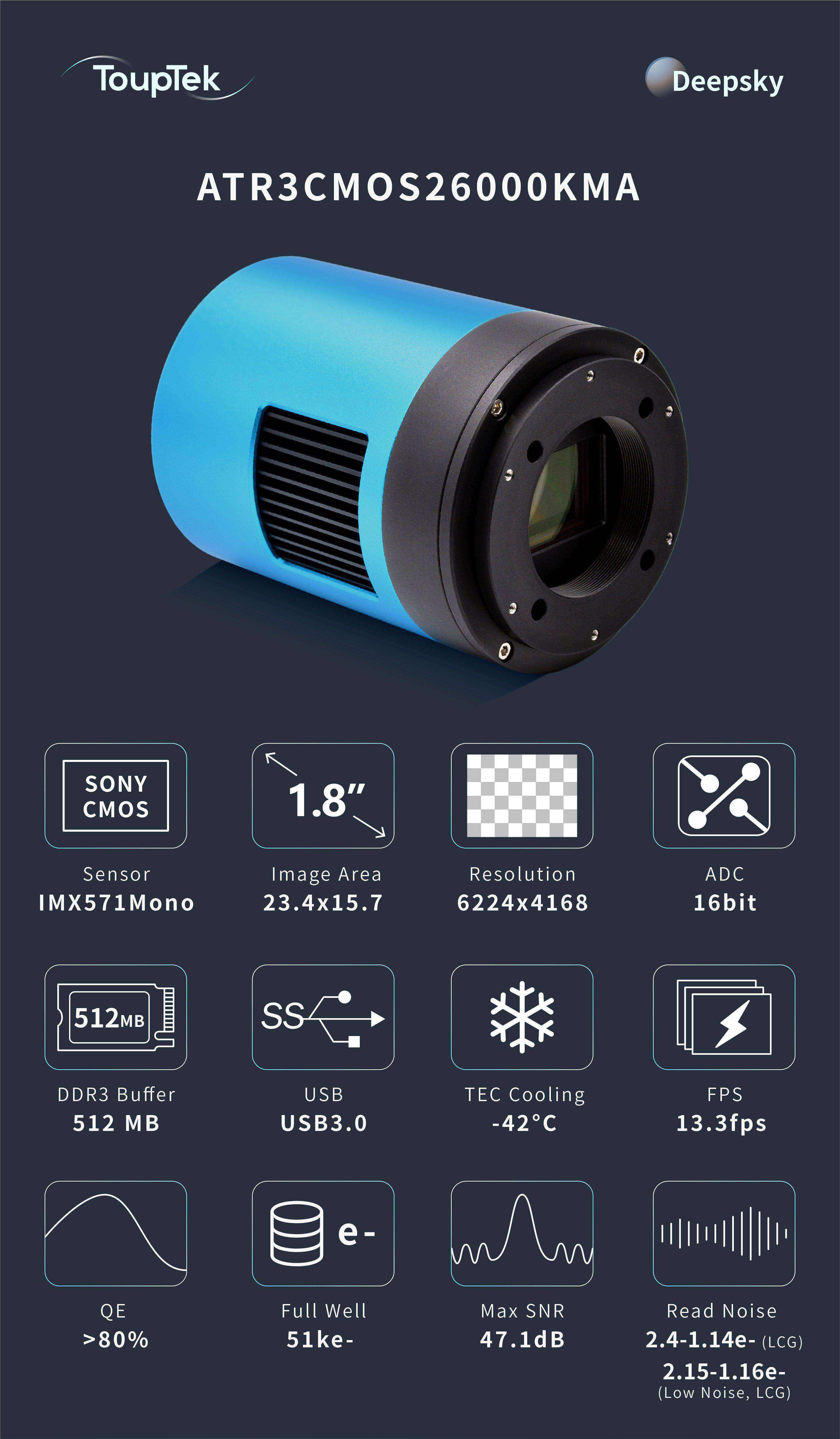In the vast ocean of the night sky, where a multitude of galaxies spin in an eternal cosmic ballet, one galaxy stands out for its proximity and significance—the Andromeda Galaxy. Known to astronomers as M31, the Andromeda Galaxy is the closest spiral galaxy to our Milky Way and serves as a fascinating subject for both amateur stargazers and professional astronomers alike. Let's embark on a journey through the stars as we explore the wonders of the Andromeda Galaxy, its features, history, and what it tells us about our place in the universe.

photographer:有文化的包工头
camera:ToupTek ATR3CMOS26000KPA
Guide Cameras:ToupTek GPCMOS02000KMA
telescope:TakahashiE-130D
Equatorial mount:CEM70
The Andromeda Galaxy lies approximately 2.5 million light-years from Earth, making it one of the few galaxies visible to the naked eye from our planet. Its spiral structure, comparable to the Milky Way's, is highlighted by lanes of dust and gas intermingled with myriads of stars that form its striking spiral arms. M31 is a giant galaxy, significantly larger than our own, and it spans about 220,000 light-years across, with an estimated trillion stars dwelling within its expanse.
Observations of the Andromeda Galaxy date back to ancient times when Persian astronomer Abd al-Rahman al-Sufi described it as a nebulous smear in the year 964. Ironically referred to as the "Little Cloud," this smudge would only later be recognized as a separate galaxy beyond the Milky Way, greatly expanding our understanding of the universe. It wasn't until the early 20th century that Edwin Hubble confirmed Andromeda's true nature, distinguishing it as a separate galaxy and forever changing our perception of the cosmos.
The Andromeda Galaxy is more than just a celestial body to admire; it's a hotbed of astronomical phenomena. At its core lies a supermassive black hole, millions of times more massive than our Sun. Around this gravitational behemoth, new stars are born in the galaxy's arms, contributing to its luminosity and dynamism. The galaxy is also surrounded by a halo of older, cooler stars and contains numerous satellite galaxies that orbit it, much like the moons around a planet.
One of the most captivating aspects of the Andromeda Galaxy is its future encounter with our own Milky Way. Astronomical predictions suggest the two galaxies are on a collision course, destined to merge in about 4 billion years. This titanic clash of galaxies will give rise to a new galactic formation, often referred to as "Milkomeda" or "Milkdromeda," and alter the structure of both galaxies forever. However, due to the vast distances between stars, it is unlikely that individual stars will collide.
For those eager to witness the beauty of Andromeda for themselves, the galaxy is best viewed in the autumn months in the Northern Hemisphere. A dark sky far from city lights is ideal, and with the help of binoculars or a modest telescope, observers can discern the glowing core and the more diffuse outer regions of the galaxy. While the finer details may elude amateur equipment, the mere sight of our cosmic neighbor provides a humble reflection on the scale and grandeur of the universe.

ToupTek ATR3CMOS26000KMA
The Andromeda Galaxy, with its spiral majesty and deep astronomical significance, captures the imagination of all who look upon it. As we peer into the depths of this neighboring galaxy, we not only gain insights into the workings of spiral galaxies but also confront the immense scale and the interconnected nature of our universe. Whether it's through the lenses of powerful telescopes or the unaided human eye, the Andromeda Galaxy continues to be a source of wonder and inspiration, reminding us of the complex, ever-evolving cosmos of which we are a part. As we prepare for an eventual celestial merger, we continue to seek knowledge and unravel the mysteries that M31 holds.